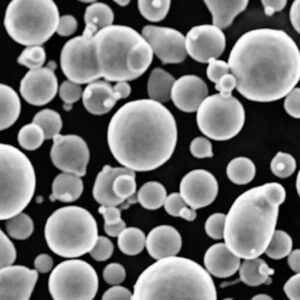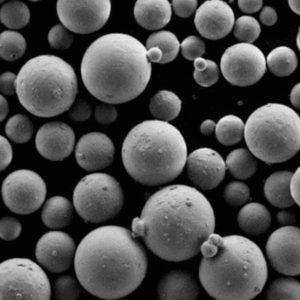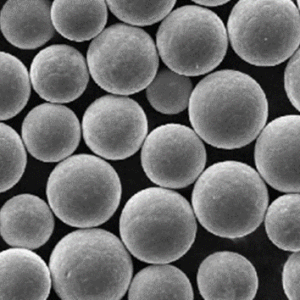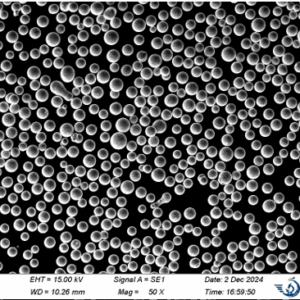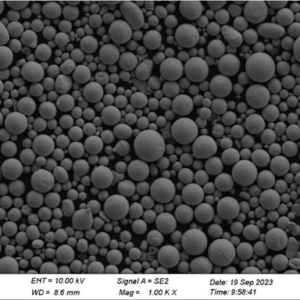Overview of Haynes 188 Powder
Haynes 188 Powder is a cobalt-nickel-chromium-tungsten alloy known for exceptional oxidation resistance and strength at temperatures exceeding 2,000°F (1,093°C). It’s a preferred material in high-performance environments such as gas turbines and aerospace engines due to its resilience under stress and high thermal capacity. In simple terms, Haynes 188 Powder is like the “superhero” of metals for extreme temperature applications.
Key Features of Haynes 188 Powder:
- High strength and hardness at elevated temperatures
- Excellent resistance to oxidation and carburization
- Good ductility and workability in its powdered form
- Superior weldability and formability for complex manufacturing needs
| Feature | Description |
|---|---|
| Composition | Cobalt-Nickel-Chromium-Tungsten alloy |
| Max Operating Temperature | 2000°F (1093°C) |
| Applications | Aerospace, Industrial Gas Turbines, High-Temp Environments |
| Advantages | High strength, oxidation resistance, thermal stability |
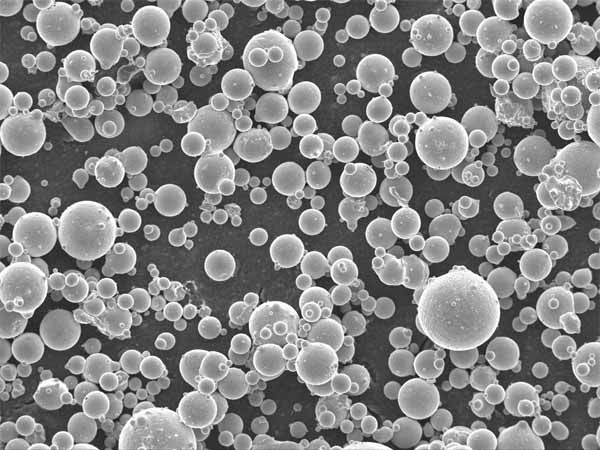
Composition of Haynes 188 Powder
The composition of Haynes 188 Powder is what gives it its unique properties. With a carefully balanced mix of cobalt, chromium, nickel, tungsten, and trace elements, Haynes 188 offers superior performance even in the most demanding applications.
| Element | Percentage Composition |
|---|---|
| Cobalt | ~50-55% |
| Chromium | ~20-24% |
| Nickel | ~1-3% |
| Tungsten | ~13-16% |
| Iron | 3% max |
| Carbon | 0.05-0.15% |
This composition allows Haynes 188 Powder to maintain stability at high temperatures, resist oxidation, and exhibit excellent thermal fatigue resistance, setting it apart from other high-performance alloys.
Characteristics of Haynes 188 Powder
Understanding the key characteristics of Haynes 188 Powder is crucial, especially if you’re comparing it to other high-temperature alloys. Each element contributes to its properties:
- Oxidation Resistance: The high chromium content forms a stable oxide layer, protecting the material from degradation.
- Thermal Stability: Tungsten adds to the alloy’s stability, allowing it to withstand fluctuating temperatures.
- High-Temperature Strength: Cobalt enhances the strength of Haynes 188 Powder under intense heat.
Applications of Haynes 188 Powder
Haynes 188 Powder is extensively used in industries where high temperature and oxidation resistance are essential. Here’s a breakdown of where this material shines:
| Application | Use Case |
|---|---|
| Aerospace Turbines | Critical components in jet engines and gas turbines |
| Industrial Gas Turbines | Power generation turbines exposed to high temperatures |
| Automotive | Exhaust systems, catalytic converters, and performance engines |
| Marine Applications | Components in engines where corrosion resistance is a priority |
| Power Plants | High-stress environments that require durability and stability at high temps |
Specifications, Sizes, Grades, and Standards of Haynes 188 Powder
The specifications and grades of Haynes 188 Powder can vary, depending on the exact application requirements and the desired properties. Below is a summary of standard sizes and grades that you might encounter.
| Specification | Details |
|---|---|
| Powder Size | Available in fine, medium, and coarse sizes |
| Grade | Haynes 188, Haynes 25 (related alloy) |
| Industry Standards | ASTM F75, AMS 5608, AMS 5772 |
| Hardness | Rockwell C scale: 32-36 |
| Tensile Strength | Up to 900 MPa (at room temperature) |
Top Models of Metal Powders Similar to Haynes 188
Here are some additional powder models that offer similar high-performance properties for comparison.
| Metal Powder Model | Description |
|---|---|
| Inconel 718 | Nickel-chromium alloy known for high strength and oxidation resistance at elevated temps |
| Haynes 25 | Cobalt-based alloy with good oxidation resistance, but slightly less strength than Haynes 188 |
| Hastelloy X | High-temperature nickel alloy, widely used in aviation and industrial applications |
| Cobalt L-605 | Excellent for turbine blades, resists oxidation and carburization at high temps |
| Stellite 21 | Cobalt-based with superior wear resistance, especially useful in tooling applications |
| Waspaloy | Nickel-based superalloy, used in high-stress gas turbine applications |
| Haynes 282 | Improved weldability and thermal stability, used in aviation engines |
| Incoloy 800H | Known for good oxidation resistance and heat treatment capabilities |
| Titanium 6Al-4V | Commonly used in high-strength, lightweight applications but with limited temperature range |
| Nimonic 90 | Nickel-chromium alloy with cobalt, ideal for high-stress turbine blades |
Comparison of Haynes 188 Powder with Other Metal Powders
To choose the right powder, it’s important to consider each alloy’s pros and cons compared to Haynes 188 Powder.
| Property | Haynes 188 | Inconel 718 | Stellite 21 |
|---|---|---|---|
| Oxidation Resistance | Excellent at high temps | High at moderate to high temps | Very good at high temps |
| Strength | Very high at elevated temps | Excellent | Good for wear-resistant uses |
| Workability | Good for complex parts | Moderate | Moderate |
| Cost | Higher due to cobalt | Moderate | Lower than Haynes 188 |
| Weldability | Good for high-temp applications | Fair | Good |
Pros and Cons of Haynes 188 Powder
| Advantages | Limitations |
|---|---|
| Exceptional oxidation and corrosion resistance | Higher cost due to cobalt content |
| High strength in extreme temperatures | Heavier than some alternative alloys |
| Excellent workability for powder metallurgy | Requires precise handling for durability |
| Widely accepted in high-performance industries | Limited suppliers, affecting availability |
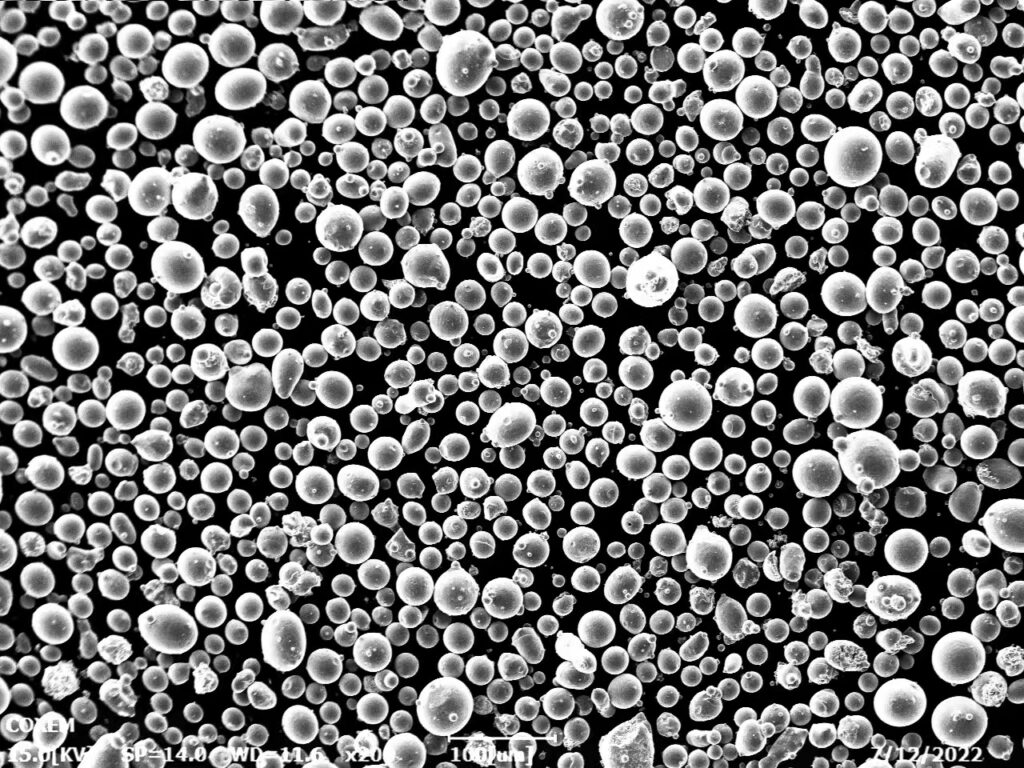
FAQ
| Question | Answer |
|---|---|
| What is Haynes 188 Powder used for? | Used mainly in aerospace, industrial gas turbines, and automotive exhaust systems. |
| How does Haynes 188 Powder compare to Inconel? | Haynes 188 offers higher oxidation resistance but may be pricier due to cobalt content. |
| Is Haynes 188 Powder expensive? | Yes, it can be more expensive than other alloys, but its performance often justifies the cost. |
| Can Haynes 188 Powder be welded? | Yes, it has excellent weldability for high-temperature applications. |
| What standards apply to Haynes 188 Powder? | Common standards include ASTM F75, AMS 5608, and AMS 5772. |

